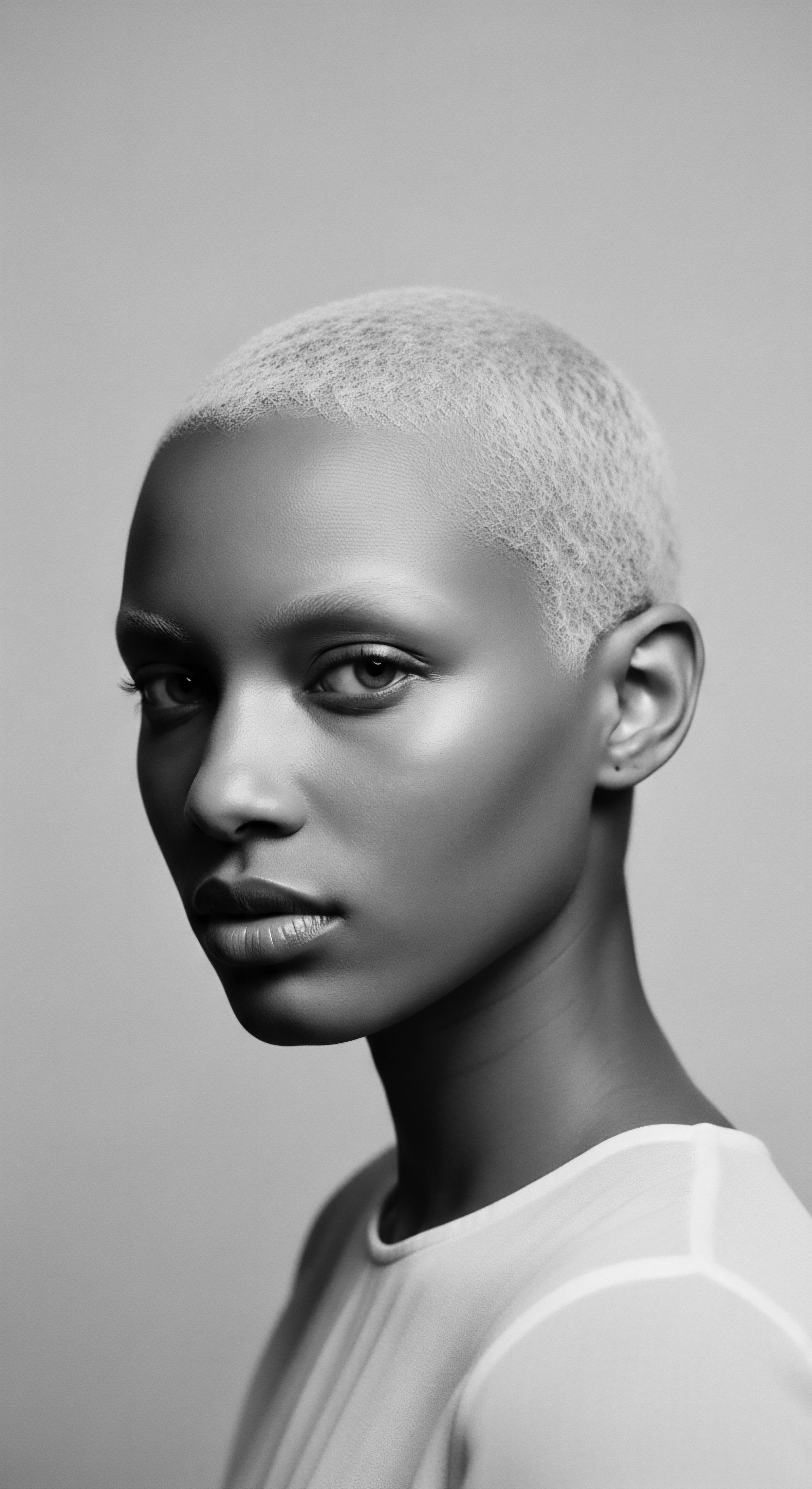
Fundamentals
The Diet Connection, at its fundamental essence, describes the intricate and inseparable relationship between the nourishment a body receives and the vitality of its hair. This understanding extends beyond mere cosmetic concern, delving into the deep biological processes that underpin hair growth and resilience. Hair, often considered a non-essential tissue by the body’s internal hierarchy, becomes an early indicator of nutritional sufficiency or deficiency.
Our strands are composed primarily of Keratin, a protein formed from amino acids, and their strength, luster, and growth patterns rely on a steady supply of vitamins, minerals, and healthy fats. Without these essential building blocks, the hair’s very structure can falter, leading to changes in texture, brittleness, and slowed growth.
Across diverse ancestral communities, particularly those with textured hair, this fundamental truth was not a scientific theory but lived wisdom. Early peoples observed direct correlations between seasonal food cycles, periods of abundance, or times of scarcity and the condition of their hair and scalp. They recognized certain foods as sources of strength for the hair, integrating them into daily meals and special preparations. This intrinsic knowledge, passed through generations, formed the bedrock of hair care traditions that were deeply entwined with dietary practices, embodying an elemental understanding of internal and external well-being.
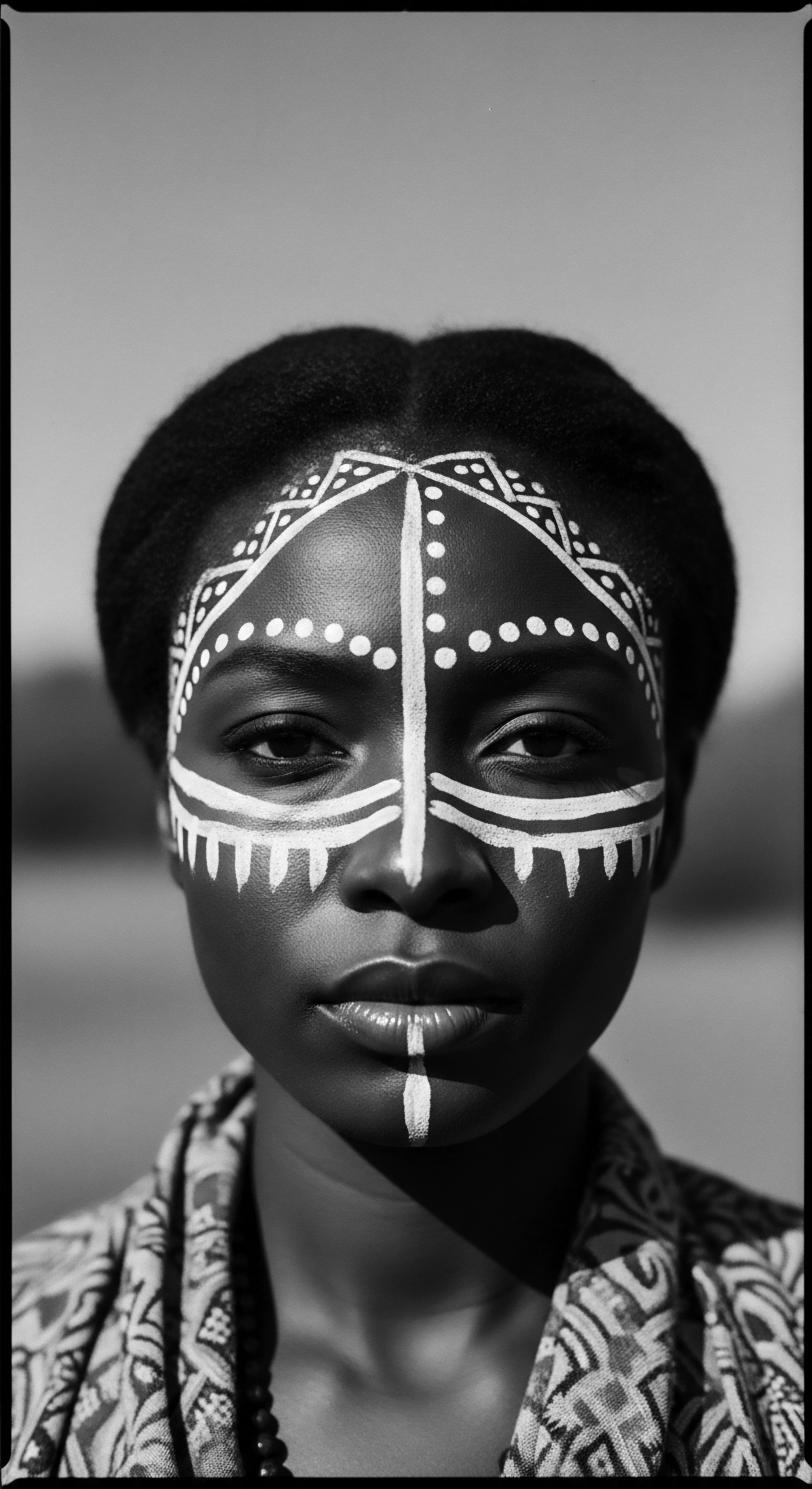
The Root of Nourishment
Hair follicles, nestled within the dermis, serve as vital centers of activity, constantly working to produce hair fibers. These tiny organs demand a continuous supply of energy and specific nutrients to perform their functions optimally, including the active division of cells during the hair’s growth phase. When the body experiences a lack of key micronutrients or macronutrients, the hair’s needs are often the first to be deprioritized, as the body channels its limited resources to more vital organs. This results in observable changes in hair quality, emphasizing its role as a visible barometer of overall health.
The Diet Connection affirms that hair vitality is a mirror reflecting the body’s inner nourishment.

Ancestral Observances and Early Care
Ancestors knew certain foods supported lustrous strands. They recognized leafy greens, various seeds, and certain animal proteins provided the necessary sustenance for healthy hair. This practical understanding shaped daily sustenance patterns. Traditional diets, rich in unprocessed foods, were inherently balanced and nutrient-dense, providing the wide array of elements needed for strong hair.
This wisdom also influenced external preparations, as nutrient-rich plant parts used in food often found a place in topical hair treatments. These dual applications highlight a holistic approach to wellness, where the internal and external spheres of care were harmoniously aligned.
- Protein-Rich Foods ❉ Many traditional diets relied on beans, lentils, and lean meats, which provide amino acids essential for keratin synthesis, the primary component of hair structure.
- Healthy Fats ❉ Nuts, seeds, and indigenous plant oils supplied fatty acids, recognized for their ability to moisturize the scalp and hair, promoting sheen and softness.
- Leafy Greens ❉ Spinach, collard greens, and other leafy vegetables offered vitamins and minerals, observed to support hair growth and scalp health.

Intermediate
Advancing our understanding, the Diet Connection interprets the synergy between precise nutritional inputs and the unique needs of textured hair. This perspective accounts for the distinctive structural characteristics of coiled and curly strands, recognizing their increased propensity for dryness and breakage. Such hair types possess an elliptical cross-section and a higher density of disulfide bonds, making them susceptible to environmental stressors and mechanical damage.
The hair’s inherent architecture therefore necessitates diligent internal support. The intermediate comprehension of Diet Connection moves beyond general nutritional principles to acknowledge how specific dietary components address these vulnerabilities, offering a framework for targeted care rooted in ancient practice and contemporary understanding.

The Science of Texture and Sustenance
Hair’s remarkable elasticity and strength stem from its complex molecular arrangement. The resilience of textured hair, with its inherent curl patterns, relies on robust Keratin Proteins and ample moisture. Proteins supply the building blocks, while healthy fats contribute to the natural oils that hydrate the scalp and hair fiber.
Micronutrients such as biotin, zinc, iron, and various B vitamins play instrumental roles in cellular division within the follicle, oxygen transport to the scalp, and the maintenance of a healthy skin barrier. A diet lacking in these elements can disrupt the hair growth cycle, compromise keratin production, and weaken the hair shaft, particularly noticeable in textured strands which inherently possess a higher vulnerability to damage.
A deeper understanding of the Diet Connection reveals how ancestral foodways provided a natural foundation for nourishing textured hair from within.

Echoes from the Source ❉ Ancestral Foodways and Hair Vitality
Traditional African and diasporic food systems intrinsically supported hair health, often without explicit modern scientific labels. They were, by design, abundant in nutrients now recognized as critical for hair vitality. Take, for instance, the widespread use of Hibiscus Sabdariffa (roselle) in West African culinary and cosmetic traditions. Beyond its refreshing taste in beverages like zobo or bissap, the dried leaves of the red sorrel plant were historically integrated into hair treatments.
Hibiscus contains amino acids and vitamin C, elements now scientifically understood to strengthen hair strands and promote growth. This practice exemplifies the subtle, yet powerful, Diet Connection woven into daily life and ancestral beauty rituals.
The resilience of communities across the diaspora, navigating forced displacements and resource scarcity, often found expression in their adaptable foodways. Despite immense challenges, they retained and transformed aspects of their culinary heritage, finding sustenance in new lands while preserving ancient wisdom. This adaptation included utilizing readily available plants that offered similar nutritional profiles to those left behind. The resourcefulness employed to sustain collective health during these periods implicitly honored the Diet Connection, ensuring continued hair vitality even under duress.
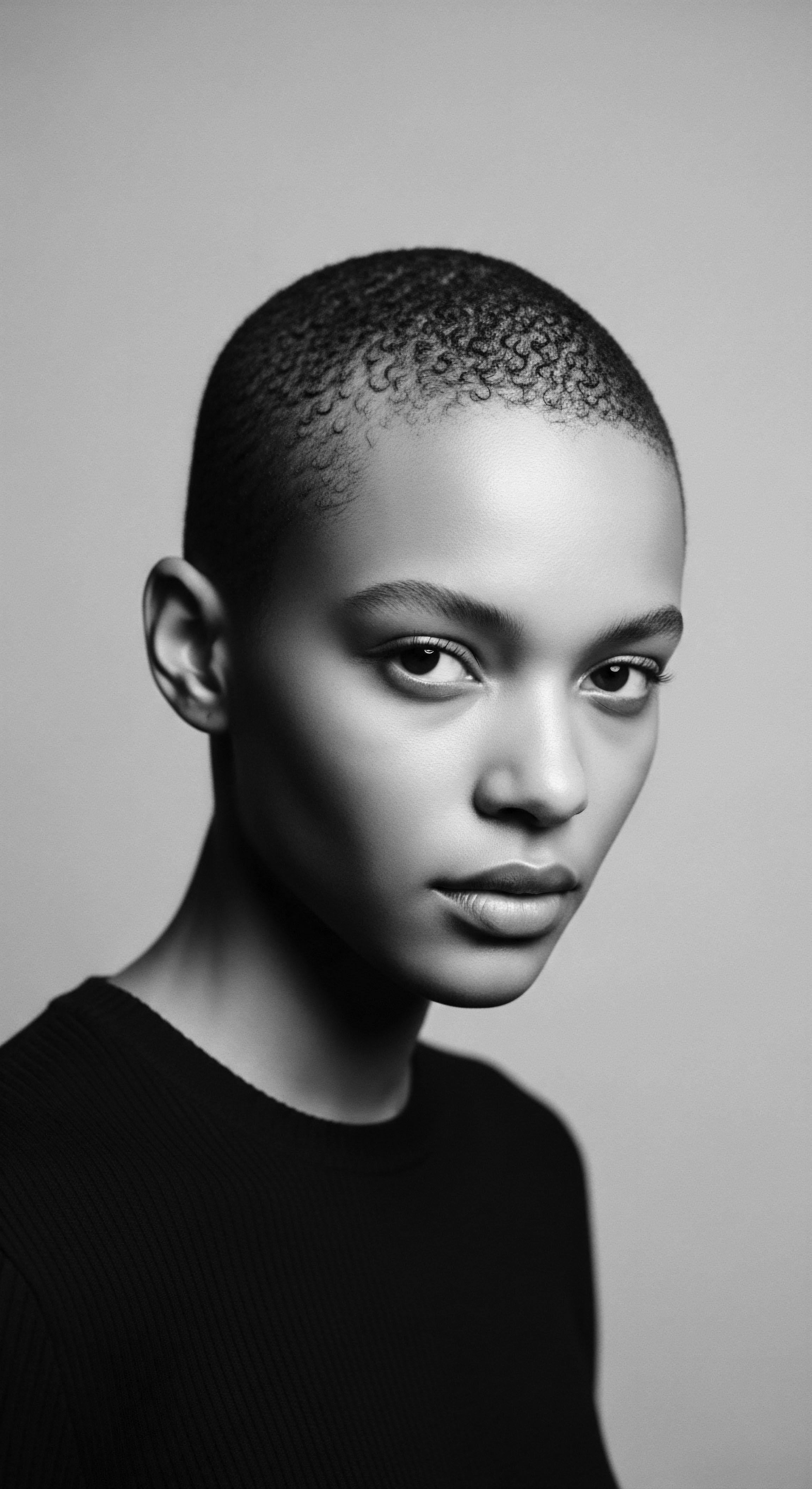
Traditional African Ingredients for Hair Health
Communities across the African continent and within the diaspora historically relied on a spectrum of natural ingredients, both consumed and topically applied, to maintain hair health.
- Shea Butter ❉ Derived from the nuts of the shea tree, abundant in West Africa, shea butter has been used for centuries as a moisturizer for skin and hair. Its richness in fatty acids and vitamins provides protective and hydrating qualities for strands.
- Moringa Oleifera ❉ This ‘drumstick tree’ or ‘miracle tree,’ a staple in many African diets, offers a rich nutrient profile including vitamins, minerals, and antioxidants, historically consumed for strength and vitality and applied to hair for regeneration.
- African Black Soap ❉ Traditionally crafted from plantain leaves and tree bark ashes, often with shea butter, this soap has been used as a gentle cleanser for hair and scalp.
These are just a few examples; the full range of ancestral practices reflects a deep understanding of natural resources.

The Tender Thread ❉ Intergenerational Hair Care
Hair care in many Black and mixed-race communities has always transcended mere aesthetics, serving as a conduit for familial bonding, cultural transmission, and community cohesion. Shared moments of hair grooming, whether braiding or oiling, provided opportunities for elder generations to impart wisdom about not just external application, but also the internal sustenance required for healthy hair. Stories of traditional foods and their perceived benefits for hair were shared alongside techniques for detangling and styling, creating an unbroken chain of heritage.
This intimate exchange underscored the Diet Connection, recognizing hair health as an outcome of both diligent external care and intentional internal nourishment. These shared practices ensured that practical knowledge about diet and hair was embedded within the fabric of family and community life.
| Historical Period/Location Pre-Colonial West Africa |
| Dietary Characteristics (Connection to Hair) Diverse, nutrient-rich plant-based foods, lean proteins, healthy fats; abundant in vitamins and minerals supporting robust hair growth. |
| Hair Care Adaptations (Reflecting Diet Connection) Hair was a symbol of identity, status, and beauty; elaborate styling supported by strong, well-nourished strands; traditional plant extracts for topical care. |
| Historical Period/Location Transatlantic Slave Trade / Plantation Era |
| Dietary Characteristics (Connection to Hair) Forced consumption of limited, often nutrient-deficient rations, leading to widespread malnutrition and deficiencies. |
| Hair Care Adaptations (Reflecting Diet Connection) Forced hair shaving as a dehumanizing act; lack of traditional hair care resources led to improvisation with available (often harsh) materials like bacon grease and lye, leading to damage. |
| Historical Period/Location Post-Emancipation / Great Migration |
| Dietary Characteristics (Connection to Hair) Emergence of "Soul Food" which, while culturally significant, sometimes shifted from nutrient-dense ancestral foods towards higher fat, sugar, and processed ingredients due to economic constraints and resource access. |
| Hair Care Adaptations (Reflecting Diet Connection) Increased interest in straightening hair for assimilation into Eurocentric beauty standards; development of hot combs and early relaxers to manage hair perceived as "unmanageable" due to underlying health factors and lack of appropriate natural care. |
| Historical Period/Location Contemporary Diaspora |
| Dietary Characteristics (Connection to Hair) Renewed focus on traditional African heritage diets for holistic health; emphasis on whole foods and micronutrient-rich sources to counteract modern dietary pitfalls. |
| Hair Care Adaptations (Reflecting Diet Connection) Resurgence of natural hair movement; re-exploration of ancestral ingredients and practices, marrying traditional wisdom with scientific understanding for optimal hair health. |
| Historical Period/Location This table illustrates the profound influence of historical dietary shifts on the hair health and care practices within Black communities, linking the evolution of strands directly to ancestral nourishment. |
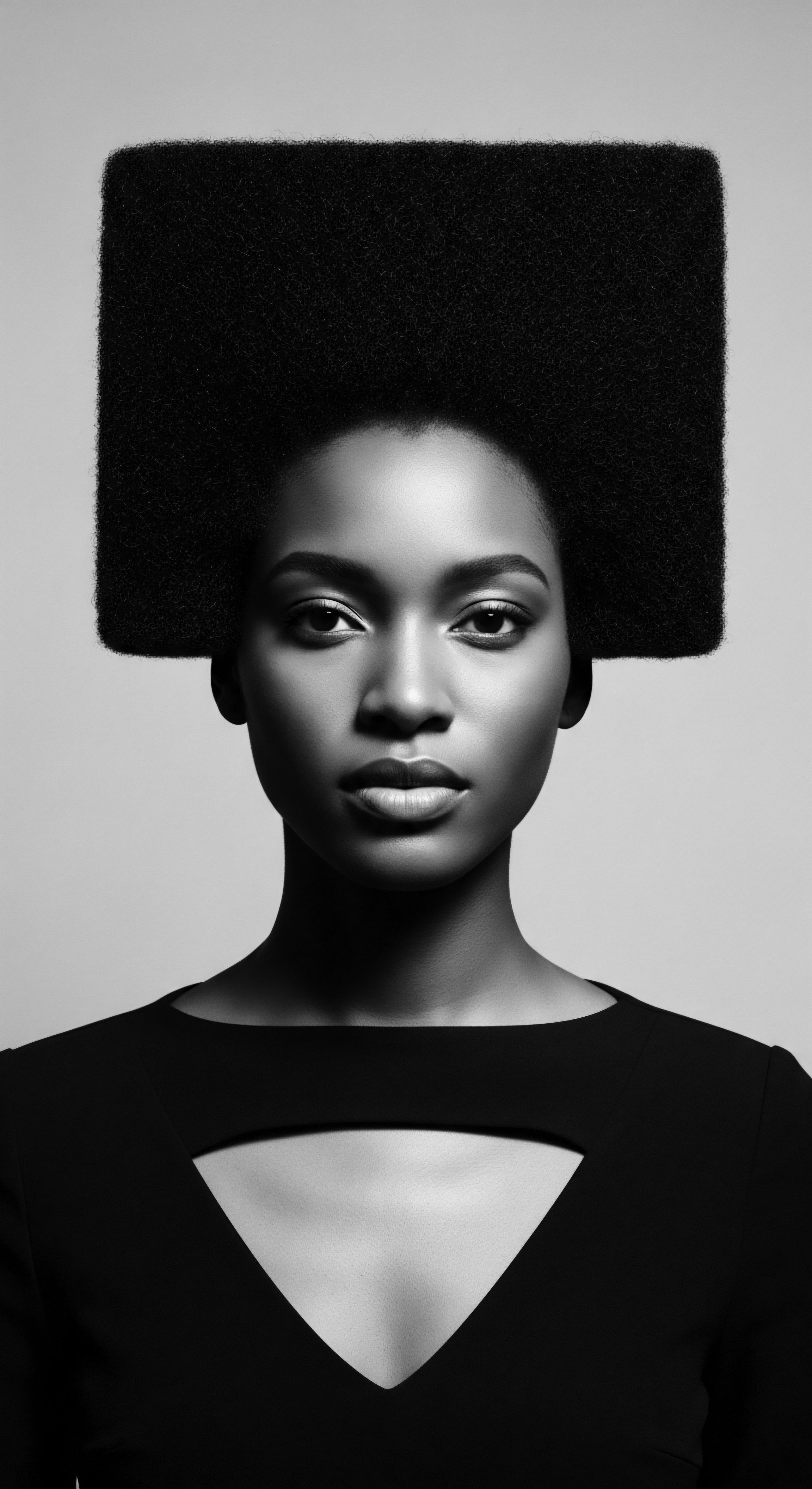
Academic
The Diet Connection, from an academic perspective, is the empirically supported thesis that the systemic availability of macronutrients and micronutrients profoundly governs the morphogenesis, structural integrity, and phenotypic expression of hair, particularly within the distinct physiological parameters observed in textured hair populations. This intellectual framework moves beyond mere correlation, positing a causal relationship wherein nutritional sufficiency modulates follicular function, keratinocyte differentiation, and the lipid composition of the hair shaft, thereby influencing attributes like curl pattern resilience, tensile strength, and moisture retention. Such a definition necessitates interdisciplinary analysis, drawing upon nutritional biochemistry, dermatological science, ethnobotany, and historical anthropology to fully comprehend its pervasive meaning.

Deepening the Biological Delineation
Hair, a protein filament, represents a dynamic biological system, intricately dependent on cellular activities within the hair follicle. The hair growth cycle, comprising distinct anagen (growth), catagen (regression), and telogen (resting) phases, is highly sensitive to metabolic states and nutrient availability. Keratinization, the process by which specialized cells produce keratin proteins, is central to hair formation. This process relies on a robust supply of amino acids, especially Cysteine, which is critical for forming disulfide bonds that dictate hair’s structural stability and curl.
Micronutrients act as indispensable cofactors in numerous enzymatic reactions vital for hair vitality. For example, biotin (Vitamin B7) directly supports keratin production, while zinc plays a significant role in the reproduction of keratinocytes. Vitamin A is essential for healthy sebum production, maintaining scalp moisture, and preventing dryness, a common challenge for textured hair due to its unique follicular structure and elliptical cross-section. A deficit in these elements compromises the hair’s capacity for healthy growth and its ability to withstand environmental and styling stresses.
The distinct morphology of Afro-textured hair follicles—their curvilinear path beneath the skin, the elliptical cross-section of the hair shaft, and the asymmetrical distribution of keratin—contributes to its characteristic coil and its predisposition to dryness and breakage. These inherent structural differences make textured hair particularly sensitive to nutritional insufficiencies. Adequate internal nourishment can, therefore, serve as a critical protective factor, strengthening the hair from within and enhancing its natural resilience against external challenges.

Micronutrients and Hair Structure
The synthesis and structural integrity of hair depend heavily on specific micronutrients.
- Protein ❉ Provides the amino acids needed for keratin synthesis, forming the fundamental building blocks of hair.
- Biotin (Vitamin B7) ❉ A key player in keratin production, supporting hair growth and strength.
- Vitamin A ❉ Crucial for sebum production, which naturally moisturizes the scalp and hair, and supports keratin synthesis.
- Zinc ❉ Essential for cell reproduction, including keratinocytes, and supports protein synthesis for hair growth.
- Iron ❉ Vital for red blood cells to transport oxygen to hair follicles, promoting growth.
- Omega-3 Fatty Acids ❉ Contribute to scalp health and hair hydration, found in foods like fatty fish and certain seeds.
These elements, often abundant in traditional diets, provided a silent, yet profound, support system for ancestral hair.
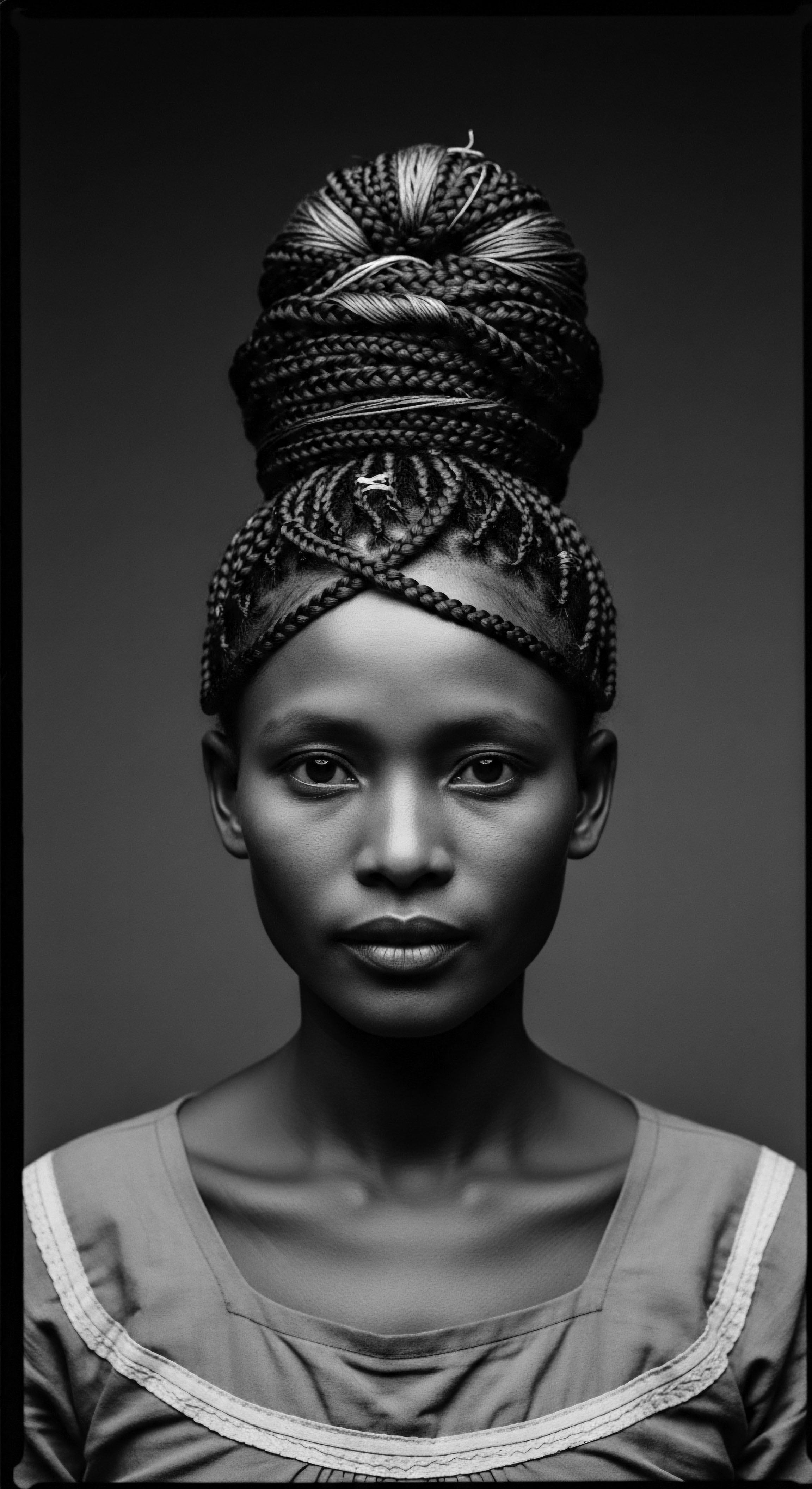
The Unbound Helix ❉ Historical Trauma and Dietary Shifts
The scholarly examination of the Diet Connection within Black and mixed-race hair heritage cannot overlook the profound disruptions imposed by the transatlantic slave trade and subsequent systemic inequalities. Pre-colonial African societies, particularly those in West Africa, maintained diverse and inherently nutritious food systems, rich in whole foods, lean proteins, and beneficial fats. These diets naturally supported robust hair health, contributing to the cultural significance and intricate styling traditions of the era.
Upon forced displacement, enslaved Africans experienced an abrupt and devastating dietary transition. Their rations became severely limited, often consisting of nutrient-poor staples such as cornmeal and salt pork, designed primarily for basic survival rather than optimal health. This drastic shift led to widespread Micronutrient Deficiencies and overall malnutrition, directly impacting hair vitality.
The compromised physical health, including significant changes in hair texture and strength, was a direct consequence of this imposed dietary deprivation. Hair, previously a vibrant marker of identity, status, and spiritual connection, became a site of struggle and physical degradation.
The historical trajectory of Black hair is inextricably linked to the nutritional landscape, revealing how dietary shifts, particularly those imposed by oppressive systems, have shaped both its biological reality and cultural significance.
A powerful historical case study illustrating this profound connection can be seen in the oral traditions documented by scholars such as Judith A. Carney. Enslaved African women, facing unimaginable precarity, would ingeniously braid precious seeds of rice, okra, and millet into their hair before forced transatlantic voyages. This practice, a covert act of resistance and an assertion of ancestral continuity, speaks volumes about the deep understanding of food’s life-sustaining power.
These women intuitively recognized that these seeds, a source of future nourishment, were critical for survival and for replanting life in new, hostile lands. This act embodies the Diet Connection as a testament to resilience, illustrating that even in the most dire circumstances, the intimate relationship between food, life, and the preservation of identity was understood and acted upon. The literal embedding of food within the hair becomes a poignant symbol of internal sustenance and the unbroken lineage of knowledge, even when external resources were brutally denied.
The nutritional consequences of the African diaspora are well-documented, showing a gradient of increasing prevalence of diet-related health conditions, including obesity, diabetes, and cardiovascular disease, as African descendants moved west from Africa to the Caribbean and then to the Americas. This nutritional transition, marked by shifts from indigenous, whole-food-based diets to those dominated by processed foods and unhealthy fats, also had undeniable implications for hair health. The challenges in maintaining natural textured hair that is prone to dryness and breakage were exacerbated by these systemic dietary changes, leading to increased reliance on external manipulation (e.g. chemical relaxers) as a means of managing hair that was internally compromised.
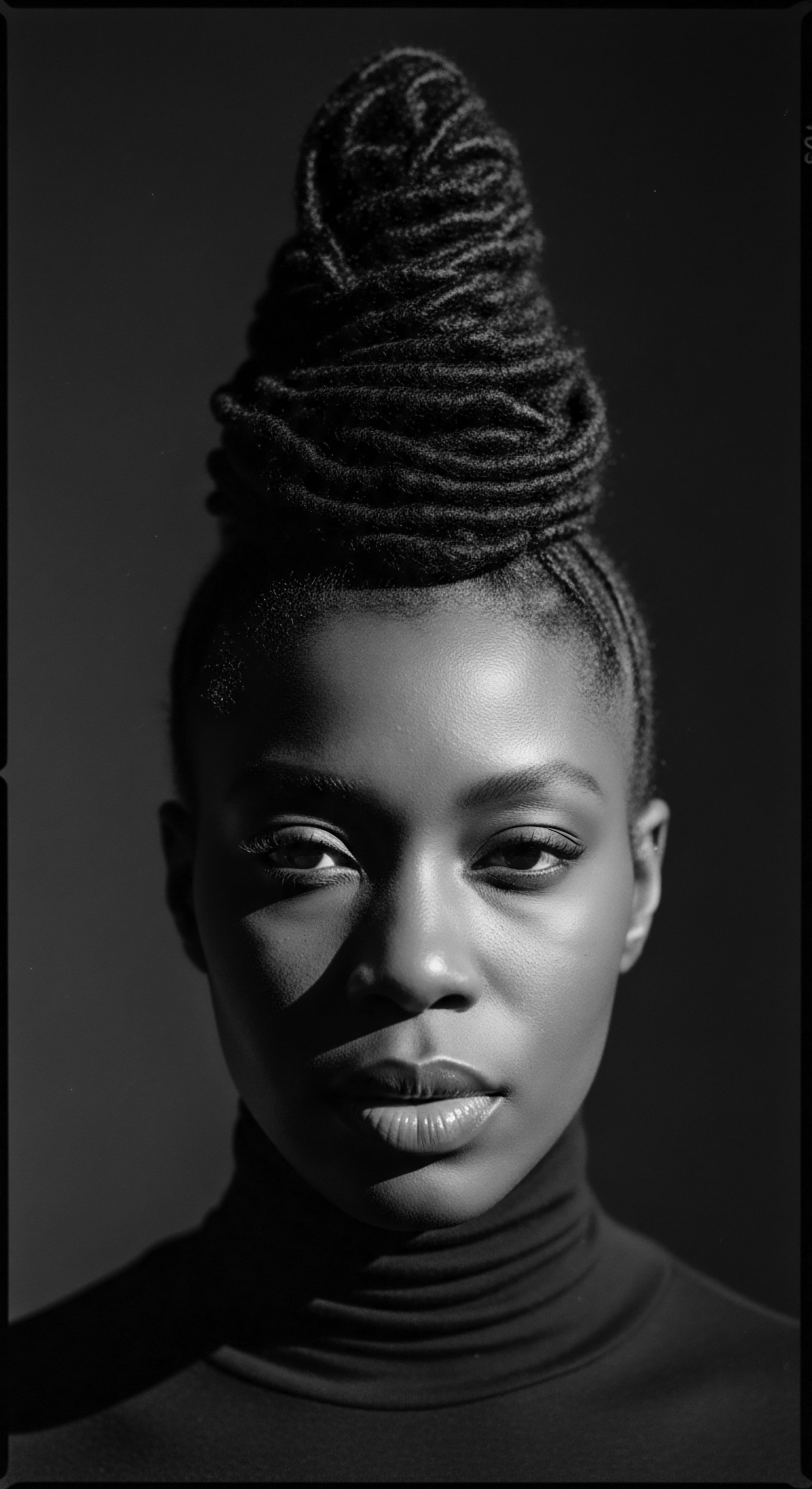
Contemporary Reclamations and Future Formulations
Contemporary hair wellness advocacy, particularly within Black and mixed-race communities, increasingly recognizes the central role of the Diet Connection. This movement champions a return to ancestral eating patterns, emphasizing whole, unprocessed foods that align with the nutritional profiles of historical African diets. This reclaiming of traditional foodways is not merely a nostalgic pursuit; it is a scientifically informed strategy for holistic health, including the restoration of hair vitality from its very core. By prioritizing nutrient-dense foods, individuals can fortify their hair’s structural integrity, enhance its moisture retention, and promote healthy growth, thereby reversing some of the inherited challenges of historical dietary shifts.
The scholarly conversation surrounding the Diet Connection also involves exploring the molecular mechanisms by which specific compounds in traditional African plants, consumed or applied topically, influence hair follicle biology. For example, research into the therapeutic properties of various African plants for hair care often points to their antidiabetic potential and their systemic nutritional benefits, suggesting a deeper metabolic link. This intersection of ancestral wisdom and modern scientific inquiry allows for the development of hair care solutions that are truly aligned with the unique biological and historical needs of textured hair, moving towards a future where hair care is both a science and a celebration of heritage.
The definition of Diet Connection, therefore, is a testament to the enduring wisdom of ancestral practices, the resilience of textured hair, and the continuous quest for holistic well-being that acknowledges the profound interplay between our plates and our crowns.

Reflection on the Heritage of Diet Connection
The journey through the Diet Connection, from the foundational cellular exchanges to the sprawling narratives of heritage, brings forth a profound appreciation for the intertwined destinies of our bodies, our sustenance, and our strands. It reveals that the health of textured hair is never an isolated phenomenon. Instead, it is a living archive, bearing the indelible marks of ancestral practices, the impositions of historical hardships, and the triumphant resilience of communities. The very curl and coil of a strand, its unique density and thirst, whisper stories of soils tilled, foods consumed, and wisdom passed through generations.
This exploration illuminates a lineage of care, where the act of nourishing the body was implicitly an act of nurturing the hair, reinforcing identity, and fortifying spirit. The wisdom held within traditional foodways, often orally preserved and embodied, speaks of a time when the internal and external self were viewed as a seamless expression of vitality. Our collective understanding of the Diet Connection becomes a testament to this holistic perspective, inviting us to reconnect with the deep rhythms of nature and the inherited insights of our foremothers.
Reclaiming the Diet Connection is a vital act of honoring the inherited strength and beauty of textured hair.
In the gentle unfolding of scientific discovery, we find echoes of ancient truths. The recognition of specific vitamins and minerals as fundamental to hair health validates the efficacy of dietary patterns centuries old. This synergy encourages us to listen to the whisperings of ancestral wisdom, discerning how these practices can inform our contemporary pursuit of hair wellness.
It is a call to view our textured hair not merely as a canvas for styling, but as a deeply rooted extension of our biological and cultural lineage, deserving of care that springs from profound understanding and reverence. The path forward is one of informed reverence, where every nourishing meal and thoughtful care ritual becomes a tribute to the enduring spirit of our hair heritage.

References
- Abbasi, A. M. et al. (2010). Ethnobotanical survey of traditional cosmetic plants used in rural areas of Pakistan. Journal of Ethnopharmacology, 129(3), 395-401.
- Alvarez, L. (2016). The power of black food ❉ How soul food shapes America. University of North Carolina Press.
- Carney, J. A. (2001). Black rice ❉ The African origins of rice cultivation in the Americas. Harvard University Press.
- Danil, R. & Dalimunthe, D. A. (2024). The Role of Micronutrients in Skin Health. Clin Dermatol J, 9(4).
- Hamed, S. F. et al. (2006). Ethnopharmacological survey of medicinal plants used for dermatological problems in Morocco. Journal of Ethnopharmacology, 107(3), 434-440.
- Hulley, I. M. & Van Wyk, B. E. (2019). Quantitative medicinal ethnobotany of Kannaland (western Little Karoo, South Africa) ❉ Non-homogeneity amongst villages. South African Journal of Botany, 122, 114-124.
- Martins, H. et al. (2024). Cosmetopoeia of African Plants in Hair Treatment and Care ❉ Topical Nutrition and the Antidiabetic Connection? MDPI.
- Nyamukuru, A. M. et al. (2017). Ethnobotanical study of medicinal plants used by traditional healers in Mbarara district, Uganda. Journal of Ethnopharmacology, 209, 290-300.
- Pieroni, A. et al. (2004). Traditional phytotherapy of native people in the central Apennines (Italy). Journal of Ethnopharmacology, 93(2-3), 241-256.
- Saha, S. (2012). Handbook of herbs and spices. Woodhead Publishing.
- Saikia, L. R. et al. (2006). Ethnobotanical survey of medicinal plants used by the Boro tribe of Assam, India. Journal of Ethnopharmacology, 107(3), 405-413.
- Sharma, H. K. & Kumar, A. (2011). Ethnomedicinal plants of Terai Forest of Western Nepal. Journal of Ethnopharmacology, 137(1), 384-391.
- Volpato, G. et al. (2012). Medicinal plants of the Sahrawi (western Sahara) ❉ Their ethnopharmacological survey and chemical composition. Journal of Ethnopharmacology, 142(3), 738-752.
- Wood, M. & Leyden, M. (2023). Chemistry of Wellness ❉ Hair and Hair Care. UVA ChemSciComm.
- Yokota, M. et al. (1998). Inhibitory effect of quercetin on histamine release from rat peritoneal mast cells. Planta Medica, 64(4), 304-307.
